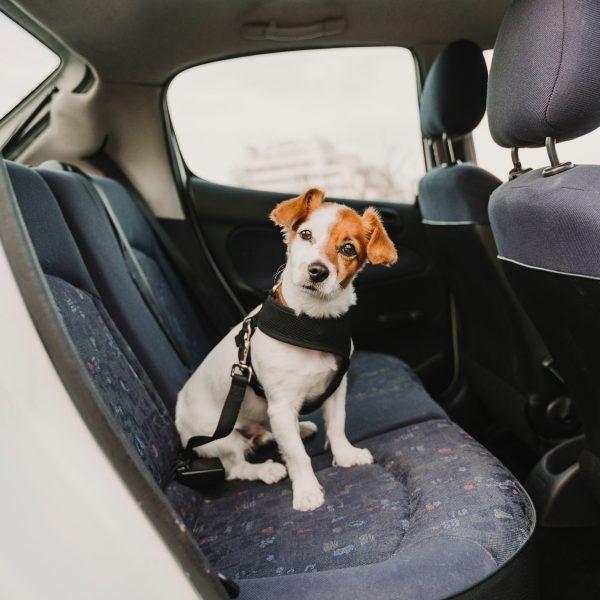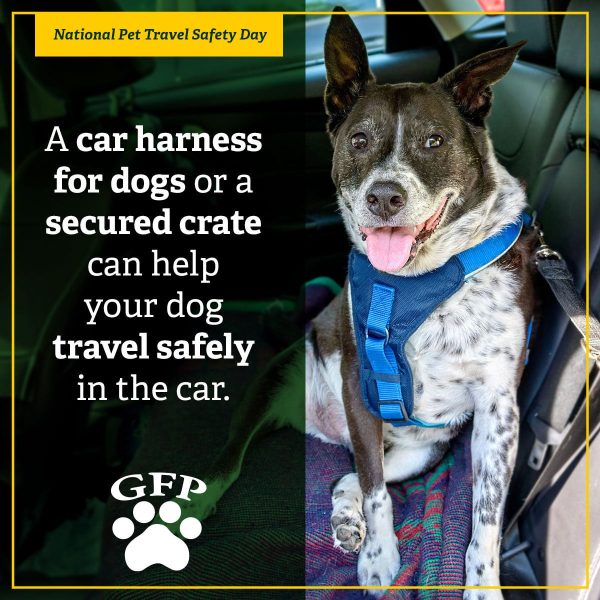What to Know About Car Sickness in Dogs (and How to Prevent It)

Like humans, dogs can experience car sickness. It’s a common issue that may occur in younger dogs rather than adult dogs. However, there are some solutions to try to help your dog feel their best when traveling. Here’s what to know about car sickness in dogs:
What Causes Car Sickness in Dogs?
If you want to cure your dog’s car sickness, you first need to understand what the underlying cause is. There can be a few different causes of car sickness in dogs:
1. Anxiety or Stress
Car rides can be a scary experience and it’s one of the common fears and phobias in dogs. It is especially common in puppies since they’re so young. Car rides can bring along a lot of anxiety, stress, or excitement. Much like a kid might vomit from excitement or nervousness from riding a roller coaster, puppies may vomit during a car ride. While some puppies might grow out of these feelings, others may not.
Because of all of these conflicting feelings, it’s not a surprise most puppies don’t enjoy car rides. Car rides also may mean trips to the veterinarian, another source of anxiety. Because of this, many puppies and even some adult dogs associate the car with bad things. Even if you’re headed to something fun like a play date or a dog park, your dog won’t be able to tell the difference.
2. Motion Sickness
Some dogs may get motion sickness when in the car. When a car is traveling, it can disrupt fluids in the inner ear. These fluids are essential in helping your dog orient themselves to the world around them. When the fluid moves too much, your dog can feel disoriented, leading to motion sickness. This can happen to dogs of any age.
Signs of Motion Sickness in Dogs
Since your dog can’t tell you that they’re going to be sick in the car, there are some signs you should be aware of:
- Restlessness, like whining or pacing
- Whining
- Lethargy
- Excessive drooling or licking of lips
- Vomiting
If your dog is exhibiting some of these signs, it can be helpful to find a safe place to pull over and let your dog out of the car. Letting them walk a bit may help alleviate stress.
How to Prevent Motion Sickness in Dogs
As mentioned above, to prevent motion sickness in your dog, you need to know what may be causing them to feel sick in the car.
Car Sickness Due to Anxiety or Stress
If your dog’s car sickness seems to be related to them feeling stressed or anxious when in the car, it might be helpful to try some desensitizing exercises. The goal is to help your dog associate the car with fun and good things.
Desensitization and Counterconditioning
Desensitization and counterconditioning are some of the ways to help your dog’s anxiety. Desensitizing your dog to the car takes some work, but it is possible. It’s best to ease into this slowly. Your dog probably isn’t very used to the car, especially if they’re a puppy. Start by letting your dog investigate your car. Open the doors and let them climb in. Offer treats to help them associate car rides with treats.
Once they seem a little bit more comfortable with your car, try a very short drive, about five minutes or less. If that’s too much, try just to the end of your driveway. If it’s a possibility, have another person with you so they can keep your pup company and offer treats. Remember to stay calm. This is a helpful way to help keep your dog calm on car rides because dogs can sense our moods.
Once they’ve been desensitized to your car, it’s time to condition them to enjoy the car. This might take some time, too. Try short car rides every few days, making sure to give treats. Keep an eye out for any body language that may indicate stress or anxiety. If you notice any, stop until your dog seems less anxious. This is why knowing the different types of dog body language is important.
Reduce Stress and Anxiety
If your dog has been desensitized and counterconditioned to the car but still seems a bit anxious, there are a few more things to help. Making sure your dog is well secured is important not only for safety, but it can also help them feel safer. This might help reduce some anxiety.
A crate can give your dog a sense of security and it’s one of the car safety tips for dogs. It’s important because a crate or a secure seatbelt harness can keep them from moving around, eliminating distraction to the driver.
Make sure your dog has access to a few toys or comfort items. Toys can distract them and something like a blanket can be comforting. It’s also a good idea to provide access to water. There are hanging water bottle options to hang from a door or inside of a crate. Providing these things is just one of the helpful tips for traveling with dogs.
If you’ve tried all these methods and your dog is still stressed or anxious when it comes to car rides, talk to your vet about anxiety medication. These meds can help your dog feel calmer and may help reduce anxiety during car rides.
Car Sickness Due to Motion Sickness
If your dog doesn’t seem to be anxious or stressed in the car but still tends to get sick, there are preventative methods to try. Ask your vet about anti-nausea medication for your dog.
Dramamine, just one of the over-the-counter medications that are safe for dogs, can be used if you’re in a pinch. However, be sure to talk to your veterinarian first so they can help you determine dosage and if there are any conflicting medications your dog may already take.
This is a brief overview of what to know about car sickness in dogs. It can be frustrating to see your dog get sick when traveling. Implementing some of these tips hopefully can make future car trips go much more smoothly!

